I’d rather not have to write about it, and haven’t for awhile. More than four years in, we’re all sick of Covid stuff and hope it’s behind us. And recent months have been good with a steady drop in hospitalizations and wastewater SARS-CoV-2 to their lowest levels since the summer of 2023. That’s great. But we’ve got to keep an eye on the constantly evolving virus, by natural selection to bypass our immune response and/or potentiate its infectivity—anything to find more hosts or repeat hosts. That’s why I will continue to stay on this important topic, even when it’s in the background like it is for most people right now.
We saw the arrival of the hyper-mutated BA.2.87 show up in late 2023, with the look of an Omicron-like event by its sequence, that gave reason for concern. But it fortunately did not pick up new mutations enabling its ability to spread. On the other hand, we saw how the JN.1 variant (a descendant of BA.2.86 with added key functional mutations), became globally dominant, and induced a wave of infections this past winter. Now it has evolved further.
Jay Weiland, my friend and data scientist, who has been accurately forecasting the Covid dynamics for some time, posted the graph below earlier this week extrapolating from wastewater data, an inflection point starting later this month.
You may recall that JN.1 had a huge growth advantage over co-existing variants, like BA.2.86 and many others, that enabled its path to global dominance. The projected inflection now is tied to a decided growth advantage of new variants that are derivatives of BA.2.86/JN.1, as posted by Ben Murrell, as seen below (KP.3, KP.2, KS.1, KP.1.1), all with double or more advantage. (Thanks to Federico Gueli for bringing it to my attention.)
What accounts for the advantage of these new variants to ultimately crowd out JN.1? It’s largely attributed to 2 added spike mutations: F for L at position 456 and R for T at position 346, which has been nicknamed the FLiRT group of variants. You can see those spike mutations compared with JN.1 for KP.3 and KP.2 below
Here is the updated convergence map from Daniel Focosi showing the new variants, such as KP.2, KP.1.1, KS.1 variants) in the top right corner.
The real question now is whether this takeover by FLiRT mutations, a replacement in the works for JN.1, will translate to a new wave. My impression is that it won’t since they are mutations we’ve been exposed to before (specifically F456L and R346T). It’s hard to know for sure, since the context is quite different, now in a BA.2.86 framework rather than preceding major variants, and there are other mutations outside the spike, and changes in secondary and tertiary structure of the virus that are not taken into account. My projection is that we could see a wavelet but not a significant new wave of infections as a result of the FLiRT variants in the next couple of months. I think it will take a much bigger challenge of our immune response than what we see with the FLiRTs. We can’t necessarily count on that optimistic perspective. Time will tell.
Higher risk individuals, which includes people age 65+ and immunocompromised, are eligible to get a second monovalent XBB.1.5 shot. There haven’t been any lab studies yet to determine how well that updated vaccine will fare against the FLiRT variants, but we’ll probably see some soon. The extent of immune evasiveness from such data will also help us predict the clinical toll of these variants.
Here’s a bit more on other Covid news.
Explanations for Marked Age Differences
Two new reports tackled both ends of the age spectrum for susceptibility to Covid.
An elegant study published in Science Translational Medicine looked at mulit-omics and the immune response (innate and adaptive) in participants age 18 to 96 years old who were hospitalized. The major findings were much reduced clearance of the virus with advanced age, along with dysfunctional immune signaling (both via interferons and cellular), and untoward, maladaptive pro-inflammatory (via multiple genes and chemokine, cytokine proteins) activation. There was also evidence of reactivation of herpes simplex and cytomegalovirus in older aged individuals in the upper airway.
The other publication in Nature Microbiology focused on changes in the nasal cell lining (epithelial) as a function of age, advanced through cultures of these cells. There were marked differences in children (goblet cells) for the affinity of SARS-CoV-2 virus (tropism) to the nasal lining, with high Type 1 interferon gene expression which helps to prevent infections. On the other hand, in older aged individuals, the nasal cells facilitated spread of the virus, increasing the chance for both infection and its severity.
These 2 studies help illuminate mechanisms not previously known or refined on the striking differences in outcomes for young and old.
Parenthetically, one pet peeve of mine is exemplified in the 2 graphics above—ageism. Look how they characterize older adults as crippled, needing a walker. That’s not right!
New Covid Vaccines
Today there was a publication on a self-amplifying mRNA Covid booster shot vs Omicron Phase 2 and 3 randomized trial. The advantage of these sam vaccines is a much lower mRNA dose, which essentially making xerox copies of itself once it gets into the cell, thus potentially reducing side effects of the mRNA per se, and its self-sustaining feature may promote longer duration of the immune protection. The results look encouraging in the newly reported trial (Figure), at least as good at the conventional booster shots of immune response. It is injected into the skin, not muscle, with a needle-free injection system.
While that publication was just for immune response and safety, there was a recent self-amplifying mRNA Covid shot approved in Japan, the first one to get a regualtory green light. Instead of 30 ug of mRNA it only uses 5 ug and had a superior immune response to the conventional (Pfizer) shot.
A recent paper in Cell briefly reviewed the bench to bedside story of the first
approved self-amplifying vaccine, that took well over a decade. It seems well worth the wait and development. I’m in favor of the alternatives, like the protein vaccine (e.g. Novavax) and self-amplifying mRNA to eke out more protection and less side effects. The US Project NextGen has invested in one of the self-amplifying vaccine programs, along with the pan-coronavirus (universal), and nasal vaccines.
There are good current summaries of the state of these new vaccines, here for nasal/mucosal and next generation by Hilda Bastian. I remain confident that we’ll ultimately have a nasal vaccine here, and it would have already been available had we made it a priority like shots were for Operation Warp Speed. But 2 nasal spray vaccines are moving along well in US-backed clinical trials. Maybe we’ll see at least one in 2025, but certainly not this year. We absolutely need a way to block infections—shots won’t do it. The new nasal epithelial cell study again reinforced how critical this entry site is for infections and adverse outcomes.
Bottom line
Covid’s not going away, but I don’t think there is a significant short-term threat of the emerging FLiRT variants. High-risk people should continue to take precautions, keeping up with boosters, and all forms of protection. Even if FLiRT doesn’t kick in, there’s plenty more ways that SARS-CoV2 can reinvent itself and find new ways or better ways to evade our immune response. We’ve seen that movie before. That’s the longer term worry, that it hasn’t and won’t just “burn out.” And why we need better vaccines to be prepared for that potential.
Thanks for reading Ground Truths. If you haven’t subscribed, now is a good time. It’s free. And please consider sharing the post.
Thankful to all the scientists who stay on the Covid watch, a few mentioned in the post and many, many more that I haven’t cited who don’t let up. I don’t like to think where we’d be without them.
Any voluntary paid subscriptions go to support Scripps Research.

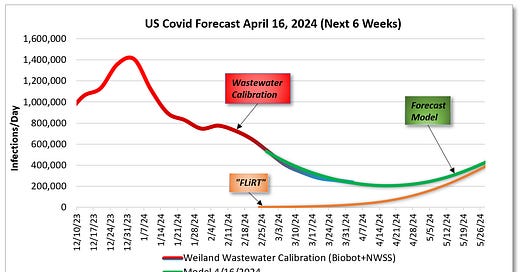


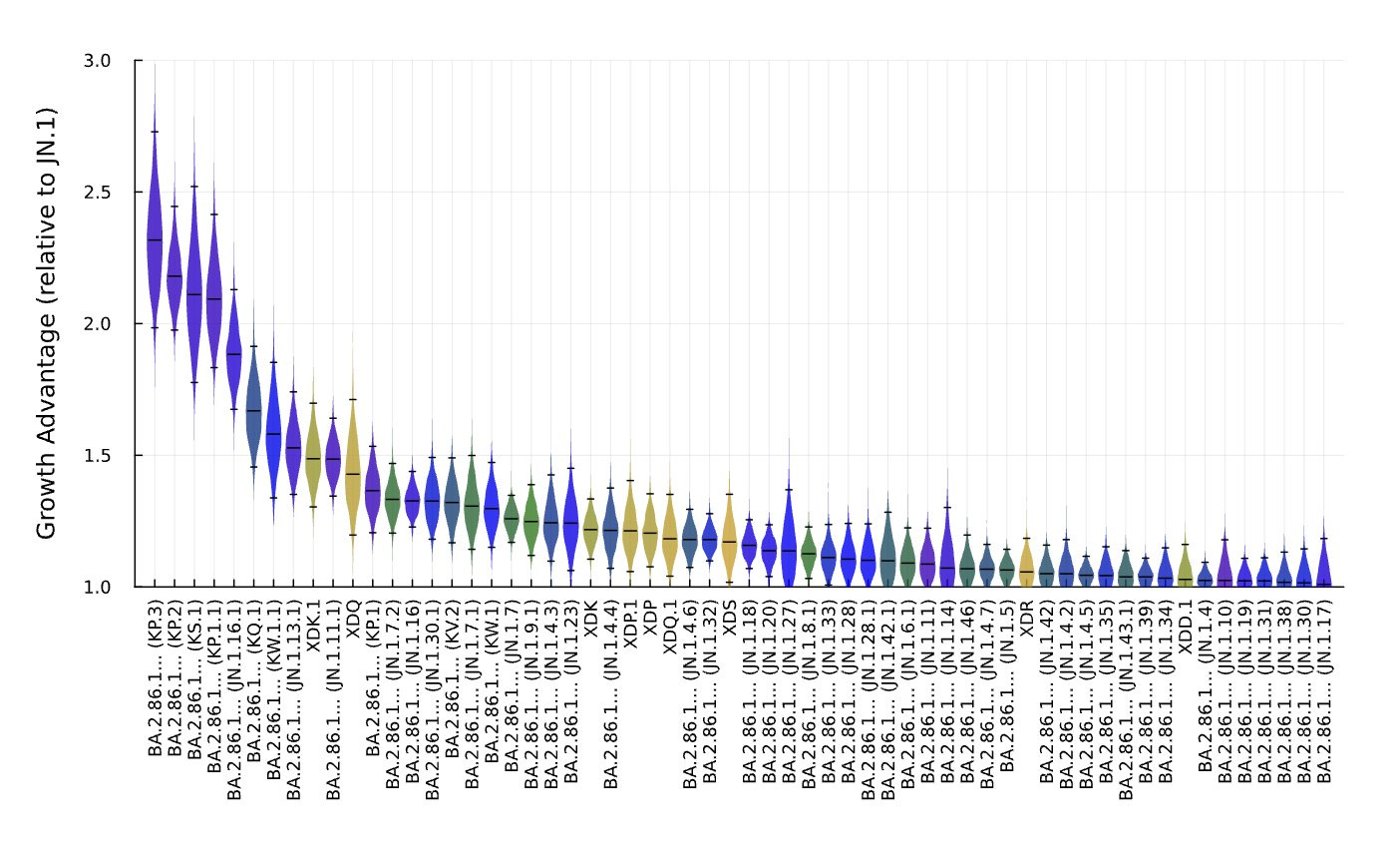

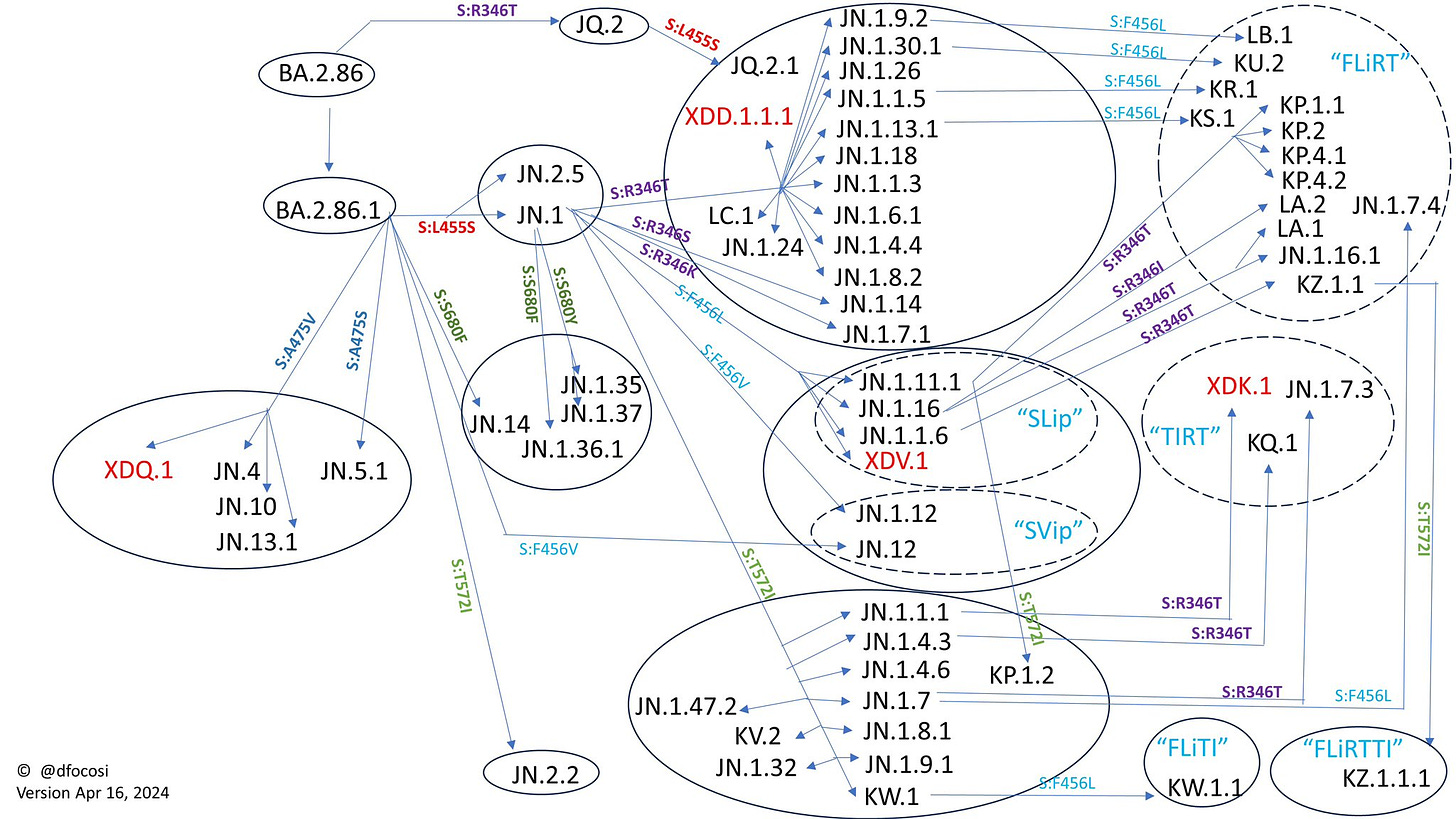


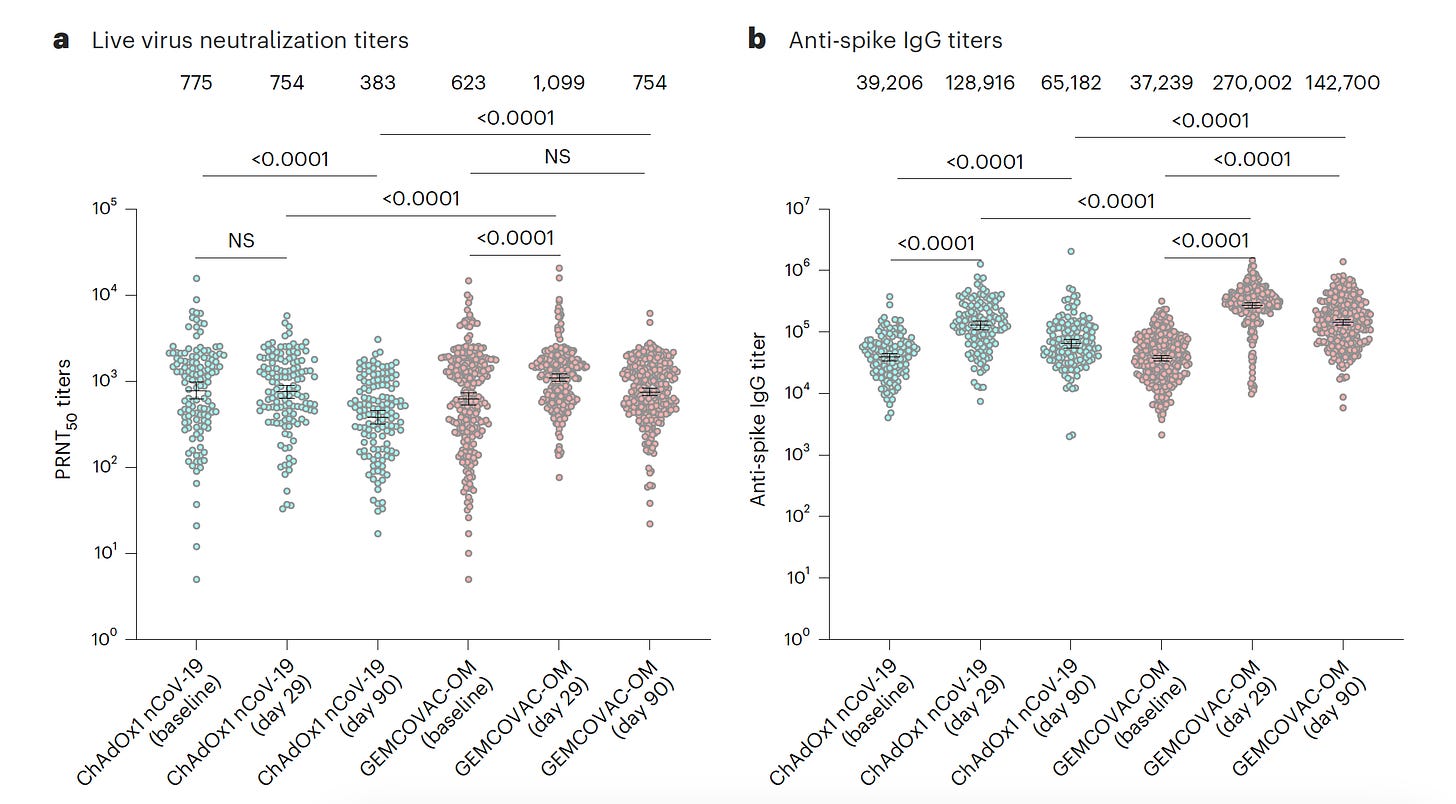
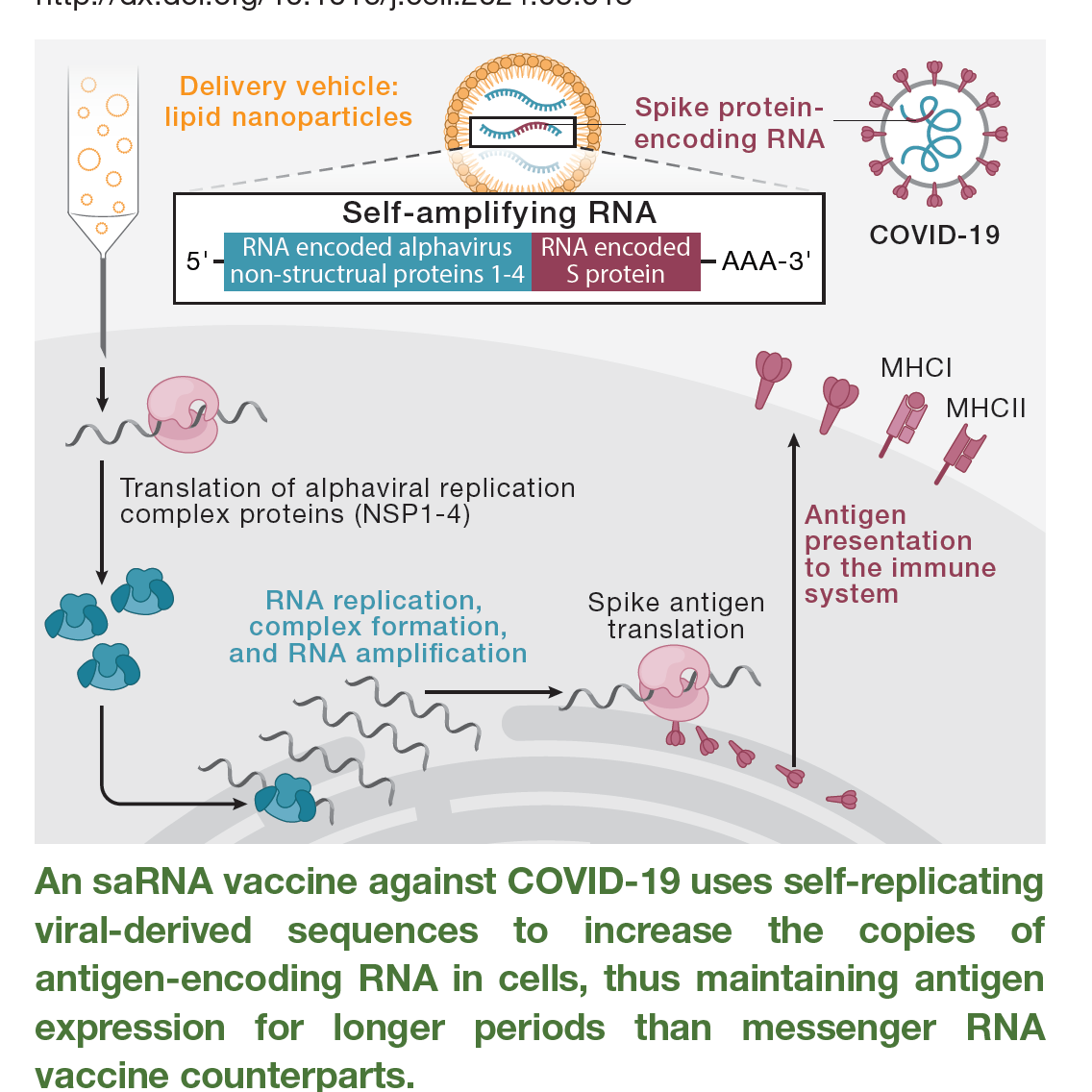
Thanks so much for being willing to stay on the Covid beat from time to time. Your posts on it are always useful, and this one is no exception. I have fingers and toes crossed on new types of vaccines, and particularly the mucosal vaccine. Let us hope! Also, I want to give you a very BIG tip of the 🎩 for this comment on a graph: “Parenthetically, one pet peeve of mine is exemplified in the 2 graphics above—ageism. Look how they characterize older adults as crippled, needing a walker. That’s not right!” I wholeheartedly agree, and it’s not trivial: these images subliminally amplify who is within the 65+ demographic, particularly, and contribute to fomenting a lot of misunderstanding.
Thank you for staying on this, Dr. Topol!